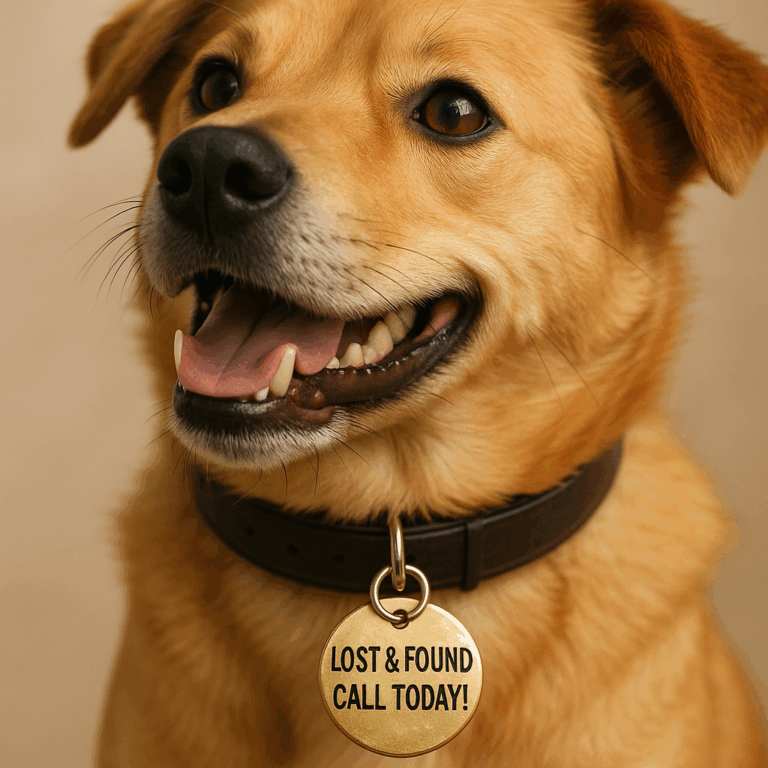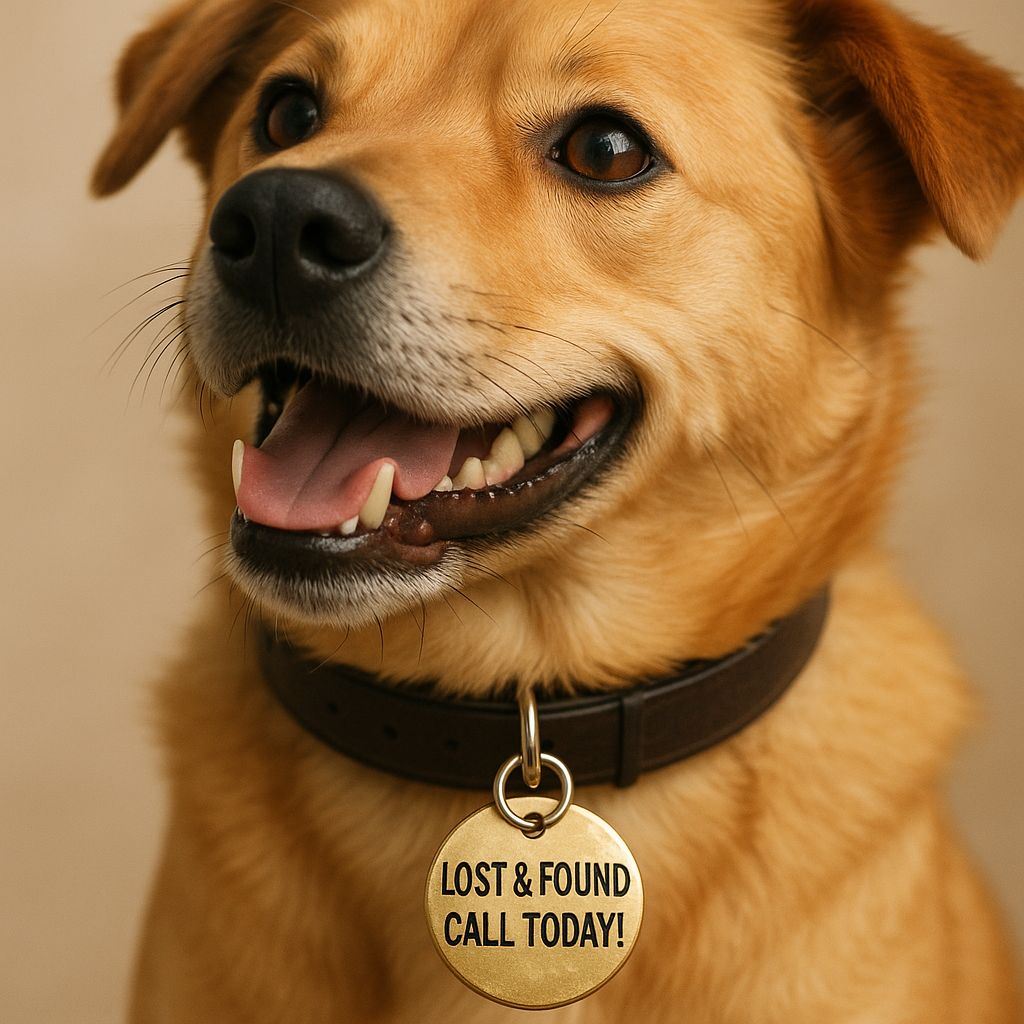The Modern Necessity of Dog ID Tags in Pet Care
In the vast landscape of pet care, one tiny accessory often stands between a dog and safety: the ID tag. At first glance, it might seem like a simple metal disc clipped to a dog collar, but this small item carries colossal importance. Every dog owner, whether they have a sprightly puppy or a seasoned canine companion, should be familiar with the pivotal role ID tags play in daily life and emergencies.
More Than Just a Name
A dog’s collar is its most immediate identifier, but the ID tag sealed on it is what conveys essential information. The fundamentals are straightforward: your dog’s name, your contact number, and possibly a secondary contact. Yet, these details pack more punch than one might assume. In situations where dogs wander off—be it an unplanned adventure from a backyard or a slip during a walk—an ID tag can be the critical link to bringing them back home safely.
The reality is sobering: millions of dogs go missing each year. Many owners rely on microchips, which are fantastic technology, but these aren’t an immediate contact point for someone who finds your dog—it requires a vet or shelter with the right scanner. An ID tag works instantly and visibly, increasing the speed of reunion dramatically.
Choosing the Right Dog ID Tag
Not all ID tags are created equal. When selecting one for your dog or puppy, durability should be at the top of your checklist. Stainless steel tags resist rust and corrosion, while brass tags offer a timeless look and lasting longevity. If your dog is a water-loving adventurer, consider waterproof engravings or tags specifically designed for aquatic activities.
The size and shape also matter—a tag too big may snag on objects, while one too small might not display critical info legibly. Round, bone-shaped, or even custom-designed tags allow a touch of personality to shine through, but clarity and durability must come first. Reflective or glow-in-the-dark elements are an added bonus for nighttime visibility.
Training and Behavior: Instilling Collar Comfort

Introducing an ID tag early during a puppy’s training helps associate the collar with positive experiences. Dogs are smart—they make connections quickly. A dog collar that carries an ID tag should feel like a natural part of their routine, not a cumbersome obstacle. Positive reinforcement during collar training ensures your dog wears it without fuss, which is crucial because an ID tag without a collar is evidently worthless.
Moreover, an ID tag on a collar can subtly influence dog behavior and safety in other ways. For instance, it signals to others that the dog is not a stray, potentially reducing unwarranted fear or hostility. This can be an especially important factor when dogs encounter other animals or people in outdoor spaces.
Invisible Fences vs. Physical Boundaries: Safety Meets Technology
While we’re focusing on ID tags, it’s worth highlighting how modern pet care trends are blending technology and traditional safety methods. Invisible fences—a technological marvel—offer dog owners a way to keep their canine companions contained without physical barriers. These systems use a collar transmitter to deliver a gentle correction when a dog approaches boundary limits.
In this setup, your dog still wears a collar (oftentimes alongside their ID tag), underscoring how complementary these tools are. Invisible fences come with training protocols designed to teach dogs the limits of their space by linking behavior with gentle feedback. Successfully trained dogs learn quickly, reducing the risk they’ll bolt onto busy streets or into unsafe environments.
The tag provides a backup: if the collar is lost or damaged, or if the invisible fence is accidentally bypassed, the ID tag remains a reliable way to identify your dog. Technology in pet care is expanding, but some basics, like visible identification, remain indispensable.
The Tag as a Lifeline
When considering the chaotic wilderness of the outdoors or even the unpredictability of a suburban neighborhood, a dog’s safety net often rests on a leash and a dog collar with an ID tag attached. This duo empowers any good samaritan who finds your dog to act quickly and correctly.
Beyond emergency contact info, ID tags can include medical alerts such as allergies, chronic conditions, or vaccination status, informing responders and potentially making a life-or-death difference.
One seasoned dog owner put it best: “An ID tag isn’t just information—it’s peace of mind worn around your dog’s neck.”
Routine Checks and Updates
A crucial yet often overlooked aspect of pet care is keeping your dog’s ID tag information current. Phone numbers change, addresses get updated, and contact persons rotate. Regularly inspect your dog collar and tag during grooming or training sessions to ensure legibility and physical condition.
For puppies, frequent updates might be necessary as they grow and their lifestyle changes. Older dogs benefit from periodic assessments, ensuring that the tag remains firmly attached and the information accurate.
Products with customizable QR codes are entering the market, allowing for real-time updates without needing to replace the physical tag. This tech-savvy innovation aligns perfectly with owners who want the convenience of high-tech solutions achieved through a simple dog collar accessory.
Final Thoughts on Smart Pet Care Tools
Dog lovers constantly seek smarter ways to care for their companions while embracing their natural instincts for exploration. From the worlds of invisible fences to GPS trackers, no technology supersedes the sheer simplicity and effectiveness of a well-made ID tag.
Equipping your dog or puppy with an informative, durable ID tag attached to a comfortable collar is not just good practice—it’s an act of responsible, loving pet care. It ensures your dog remains connected to you, no matter where their paws may take them.
Tags: canine ID tags, dog collar ID tags, dog ID tags, dog identification importance, dog owner essentials, dog safety, lost dog recovery, pet care accessories, pet emergency ID tags, pet identification tags